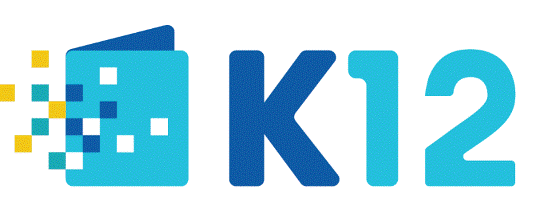





|
|
|
|
|
CONTACT 732-281-7122 732-423-8052 |
|
K12-COMPUTERS-ROBOTICS |
|
Robotics, design, construction, and use of machines (robots) to perform tasks done traditionally by human beings. Robots are widely used in such industries as automobile manufacture to perform simple repetitive tasks, and in industries where work must be performed in environments hazardous to humans.
Course Description
This course provides a general introduction to robotics from a computational perspective covering AI foundations of mobile robots and robotic arms. It will provide a view of robots as autonomous agents with a mechanical embodiment, which must observe and act upon their surroundings through the iterative execution of a sensing-planning-actuation loop. On the sensing and perception side, the course will cover state estimation challenges, such as robot localization, simultaneous localization and mapping (SLAM), as well as Bayesian solutions to these problems, such as Kalman and particle filters. For planning and decision making purposes, the course will introduce basic planning and replanning methods, such as A* and D*-like algorithms, the configuration space abstraction, sampling-based planners, and a toolbox of algorithms that solve problems by utilizing these principles. Extensions to multi-robot systems, online planning and handling uncertainty will be touched upon as well. On the control side, the course will offer an introductory coverage of robot kinematics and dynamics.
Prerequisite Introduction to Discrete Structures II
Source Material
This course does not require the purchase of textbooks. It will draw upon material from multiple textbooks.
Principles of Robot Motion: Theory, Algorithms, and Implementations (PRM) by Howie Choset, Kevin M. Lynch, Seth Hutchinson, George A. Kantor, Wolfram Burgard, Lydia E. Kavraki, Sebastian Thrun
Probabilistic Robotics [ProRob] by Sebastian Thrun, Wolfram Burgard and Dieter Fox Introduction to Autonomous Mobile Robots [IAMR] by Roland Siegwart, Illah Reza Nourbakhsh and Davide Scaramuzza Planning Algorithms (PA) [book download] by Steve LaValle AI: A Modern Approach (AIAMA) by Stuart Russell and Peter Norvig Computational Geometry: Algorithms and Applications (CGAA) by Mark de Berg, Otfried Cheong, Marc van Kreveld, Mark Overmars Modern Robotics: Mechanics, Planning, and Control (MR) [book download] by Kevin M Lynch and Frank C. Park When necessary, information will be provided on how to acquire legal digital copies of reference textbook material related to the sources above. Only portions of the above books will be used.
Schedule of CS460/560 - Fall 2018
DATE LECTURE TOPIC
FINAL EXAM - TBA T 9/2 0. Syllabus & Introduction F 9/7 1. Path Planning for Points/Disk Robots in Planar Setups
Reading: Chapter 15 of the Computational Geometry book, Chapter 3 of the AI book, Chapter 2.2 of the Planning Algorithms book T 9/9 2. Review of Search Methods and Intro to Visibility Graphs
Reading: Chapter 3 of the AI book, Chapter 2.2 of the Planning Algorithms book, Chapter 5.1 of the Principles of Robot Motion book, Chapter, Chapter 15 of the Computational Geometry book F 9/14 3. Combinatorial Planners
Reading: Chapters 5.1-2-3 and 6.1 of the Principles of Robot Motion book, Chapter 15 of the Computational Geometry book T 9/16 4. Robots with Geometry: Configuration Space Abstraction
Reading: Chapter 13 of the Computational Geometry book, Chapter 3 of the Principles of Robot Motion book, Chapters 3 and 4 of the Planning Algorithms Book, Chapter 2 of the Modern Robotics Book F 9/21 5. Review of C-space - Intro to Sampling-based Motion Planning
Reading: Chapter 3 of the Principles of Robot Motion book, Chapter 2 of the Modern Robotics Book, Chapters 3 and 4 of the Planning Algorithms Book T 9/23 6. Sampling-based Planning
Reading: Chapters 7.1 and 7.2 of the Principles of Robot Motion F 9/28 7. Sampling-based Planning II
Reading: Chapters 7.1 and 7.2 of the Principles of Robot Motion - "effective_sampling_3d.pdf" under Resources/Reading Material on Sakai T 9/30 8. Properties of Sampling-based Motion Planners – Potential Functions
Resources/Reading Material on Sakai - Chapters 4.1-4.2-4.4-4.6 of Principles of Robot Motion book F 10/5 9. Gradient-based Approaches & Trajectory Planning
Chapters 4.1-4.2-4.4-4.6 of Principles of Robot Motion book - "CHOMP_IJRR.pdf" under Resources/Reading Material on Sakai - Chapters 10.1 and 11.2 of the Principles of Robot Motion book T 10/7 10. Trajectory Planning
Chapters 11.2 and 11.3 of the Principles of Robot Motion book
F 10/12 11. Planning for Non-holonomic and Underactuated Systems
Chapters 12.1-12.2-12.3 of the Principles of Robot Motion book T 10/14 12. Planning for Non-holonomic and Underactuated Systems 2 + Review of Path/Trajectory Planning
Chapters 12.1-12.2-12.3 of the Principles of Robot Motion book F 10/19 Midterm T 10/21 13. Intro to Sensing and Basic Concepts in Probability and Bayesian Reasoning F 10/26 14. Bayesian Filtering T 10/28 15. Kalman Filtering F 11/2 16. Particle Filtering F 11/9 17. Sensor Models T 11/11 18. Motion Models F 11/16 19. Intro to Simultaneous Localization and Mapping (SLAM) W 11/18 20. SLAM F 11/30 21. Least Squares for SLAM T 12/2 22. Planning under Uncertainty F 12/7 23. Highlights of Reinforcement Learning T 12/9 Review for Final Exam Exams There will be 2 online exams, one midterm and one final:
The first exam will cover material on path planning corresponding to the first component of the course (Lectures 1 to 11), The second, final exam will cover material on perception and state estimation corresponding to the second component of the course (Lectures 12 to 22). Students following CS560 will have to answer additional questions in each exam relative to students following CS460 in order to be awarded a perfect grade.
The tentative schedule on the course website indicates the planned date of the midterm, which will take place during the regular lecture time. All exams are online this semester. A missed exam draws zero credit. Emergencies will be considered upon submitting a University-issued written verification to the Instructor; for assistance contact your Dean’s Office. Also, check the definition of Final Exam Conflicts by SAS and Rutgers.
Assignments There will be multiple assignments, which will include a mix of homework questions and programming challenges. You will be informed in advance when an assignment is due. Typically, each assignment will include opportunities for extra credit for CS460. Some of these extra credit problems will be required for students taking CS560.
The programming assignments will primarily involve programming robot planning and perception algorithms and evaluating their efficiency in simulation. Typically you will be asked to submit an electronic version of your code, test runs and a typeset report. The assignments may also include practice theoretical questions, which are intended to assist the student in mastering the course content.
Assignments should be completed individually by students.
Students will receive 5% extra credit if they typeset (in LaTeX) e.g., if a team was to receive a score of 62/100 and they provide a typesetted homework, then their score will be 65/100, i.e,. +5% of 62 points. Resources on how to use LaTeX are available on the course’s website.
Grading System |
